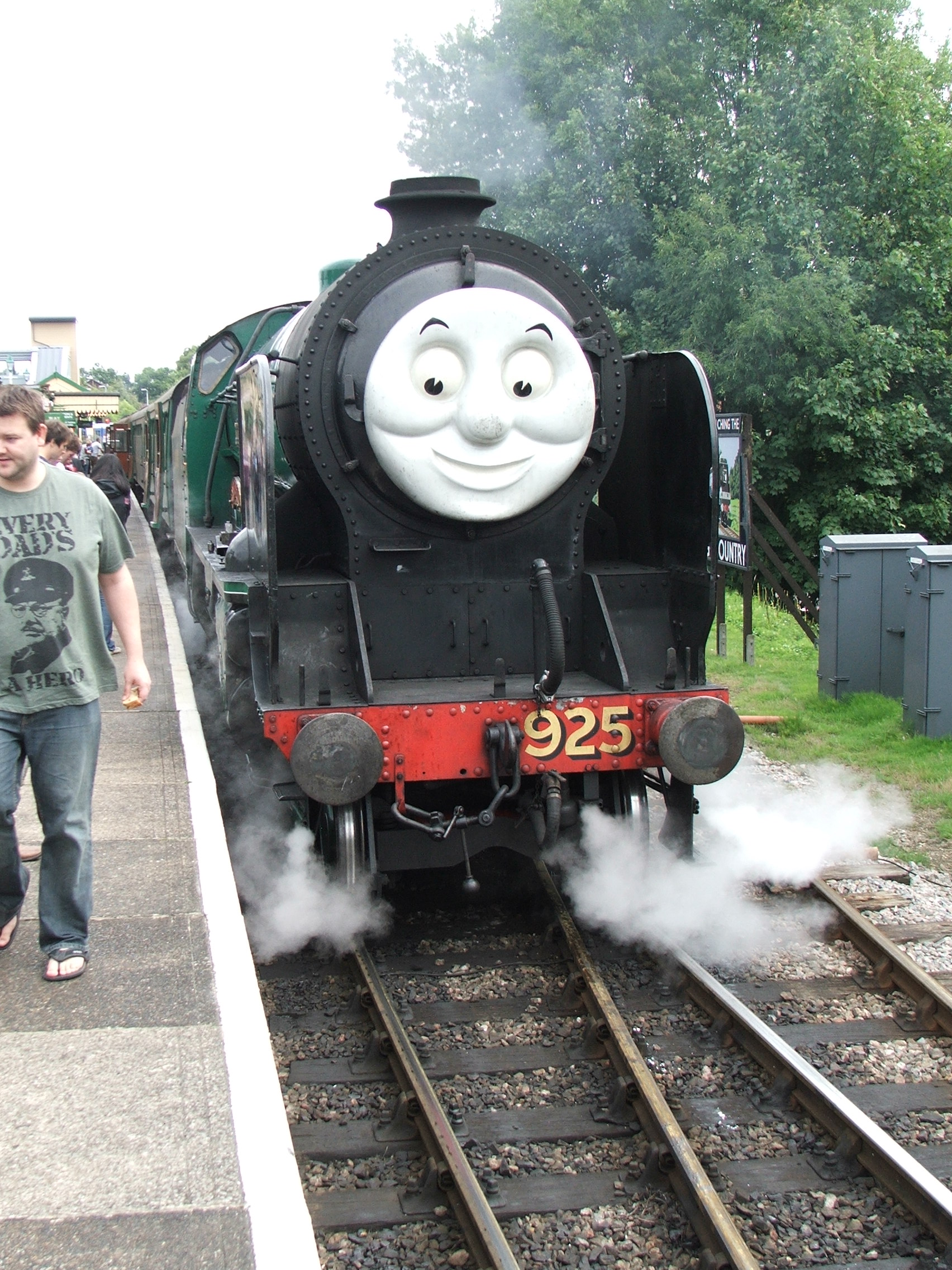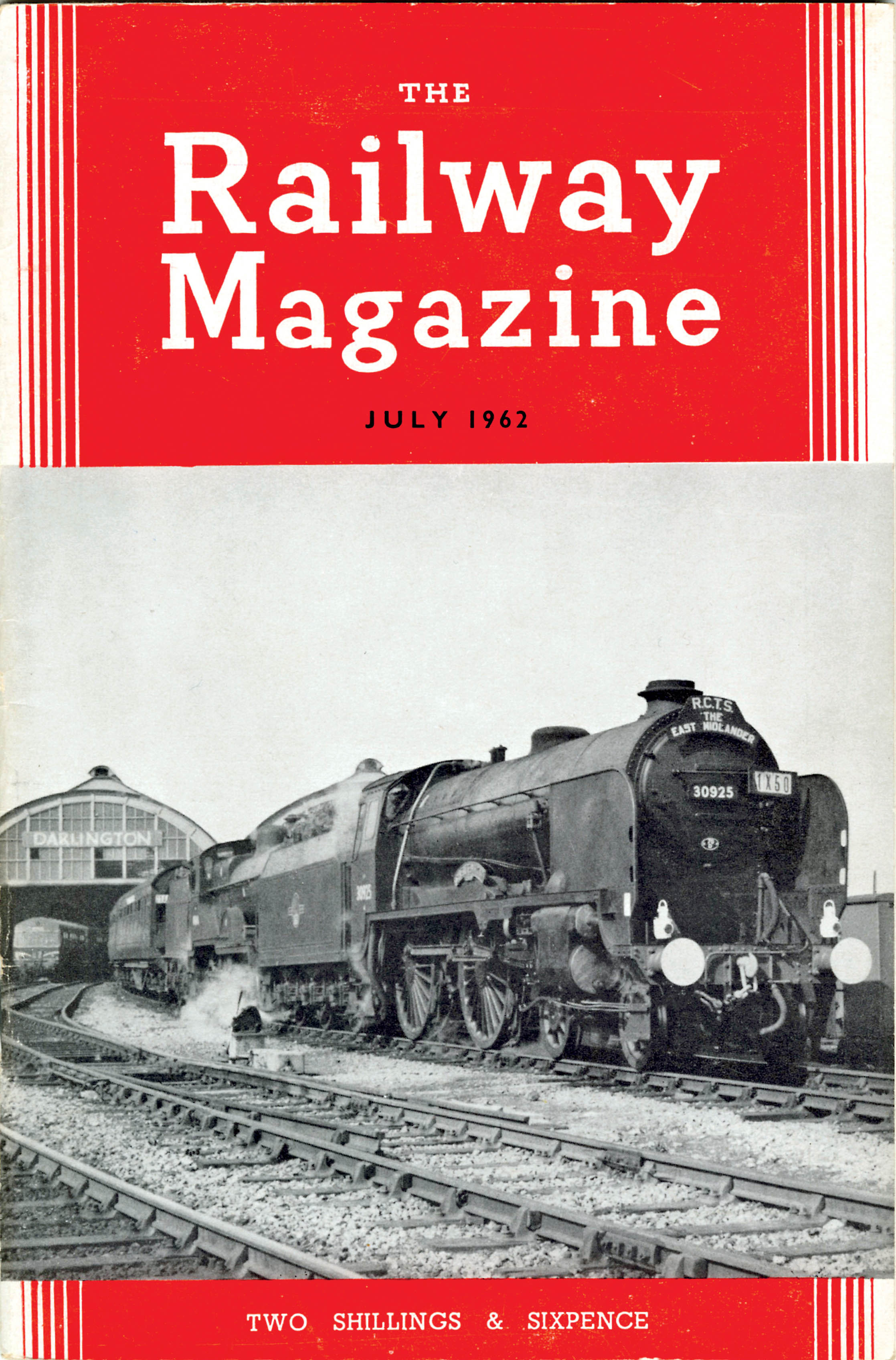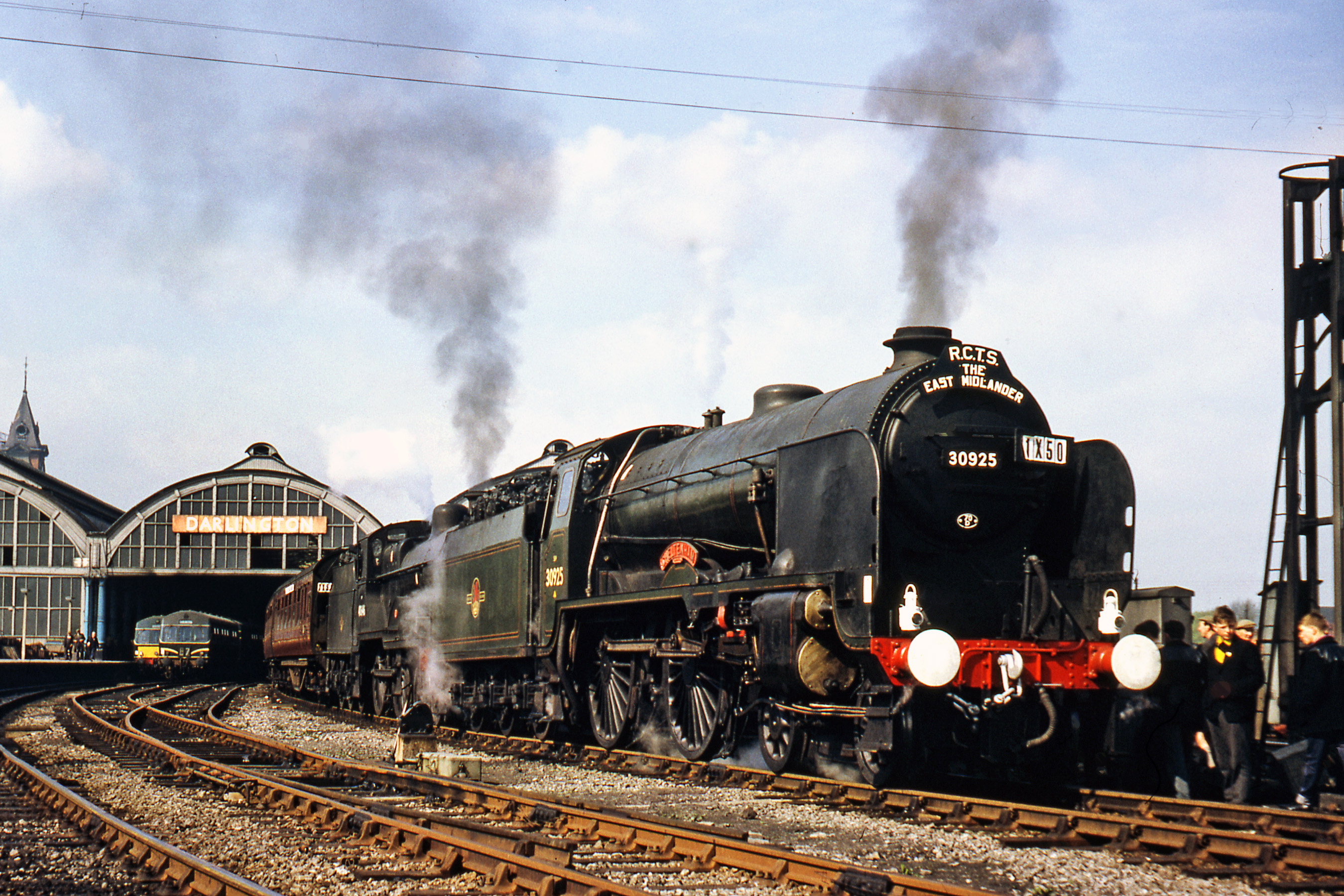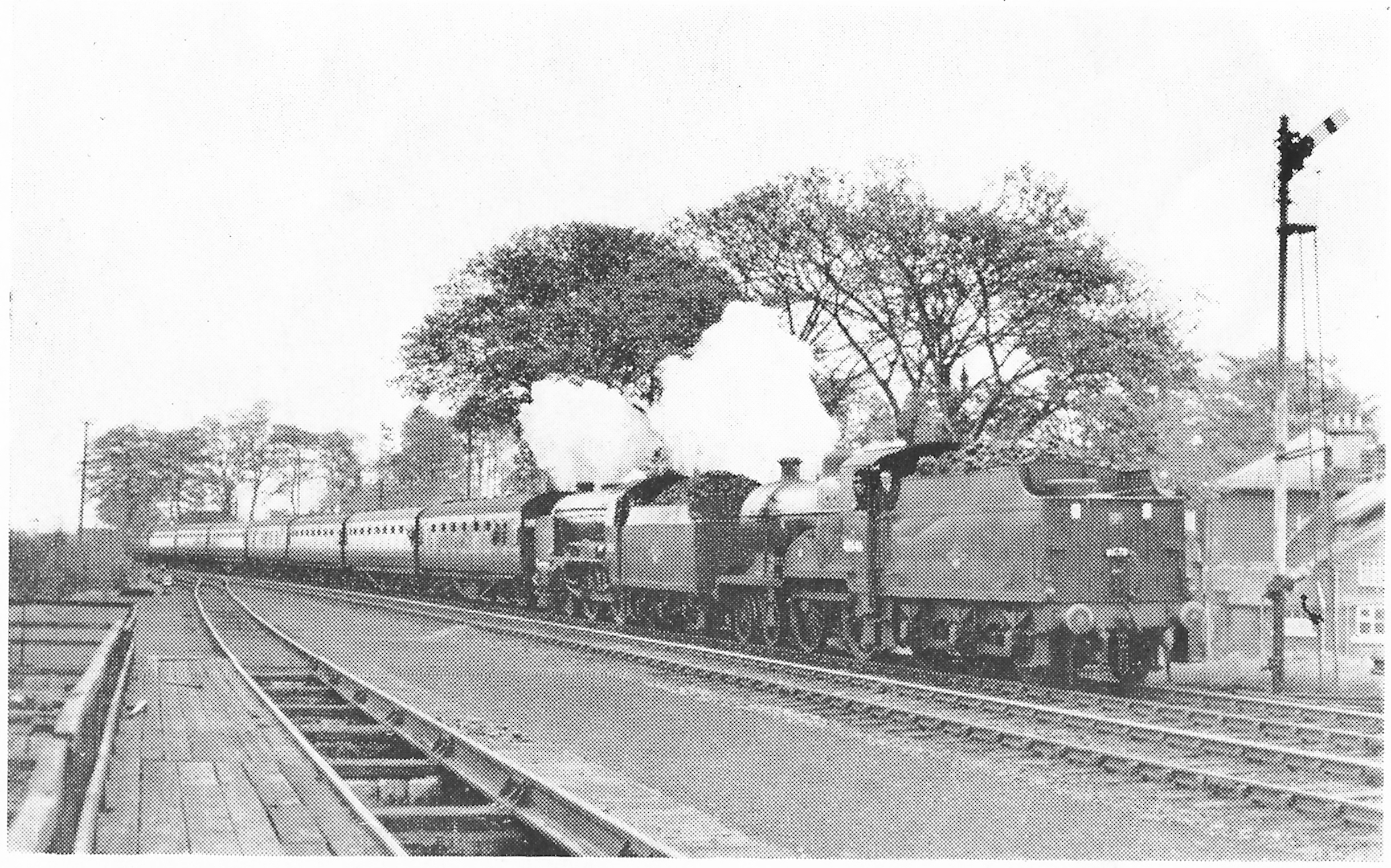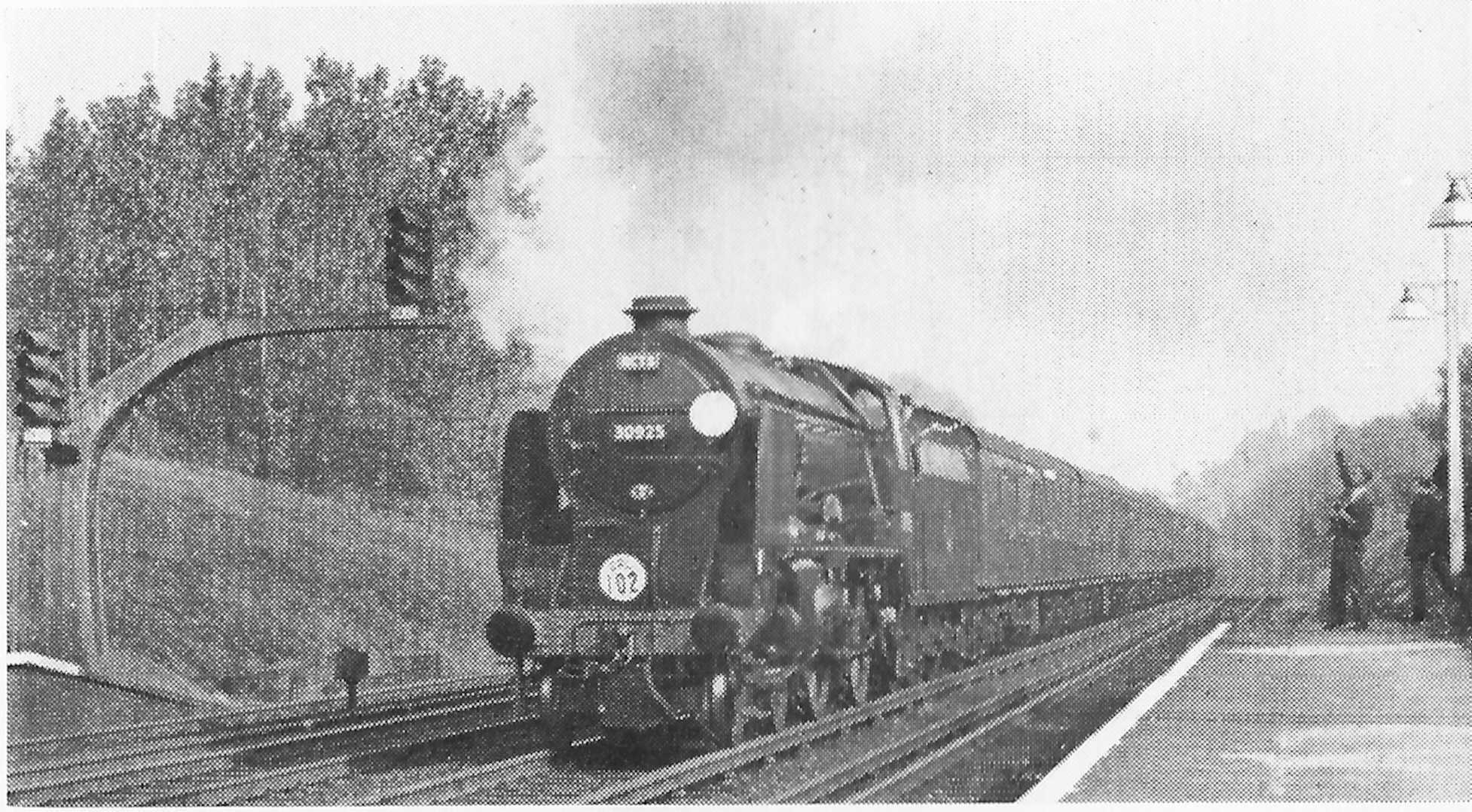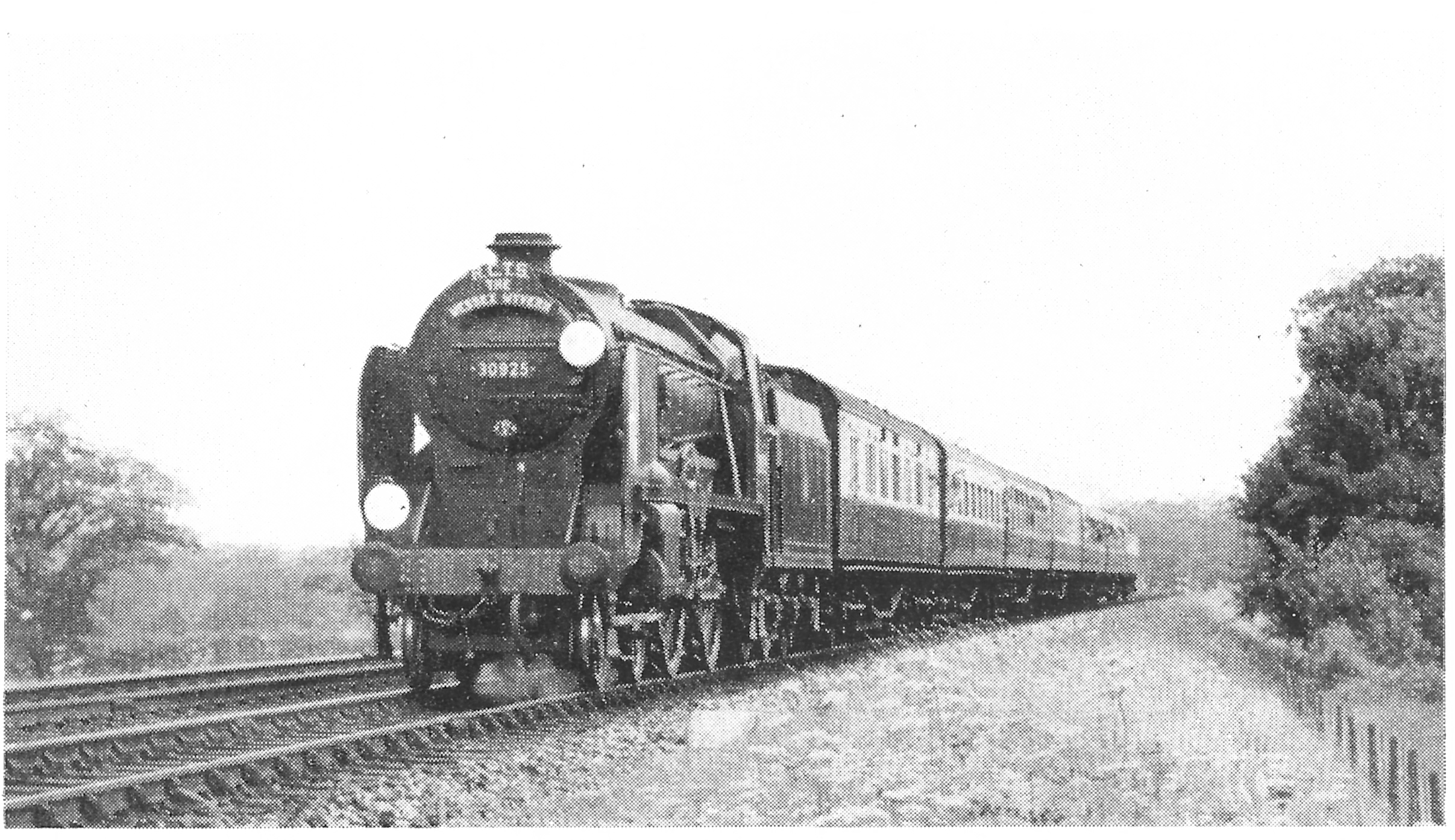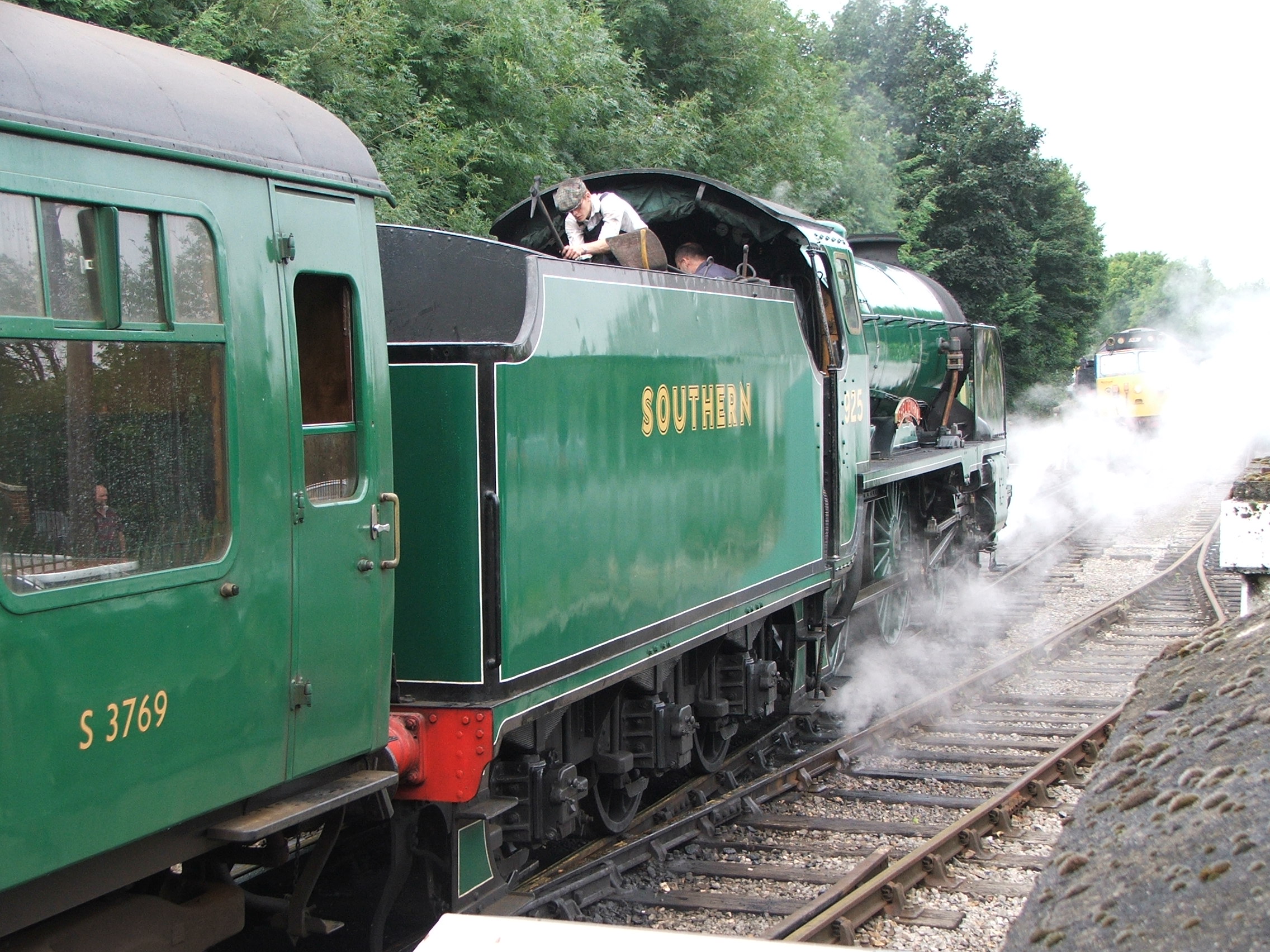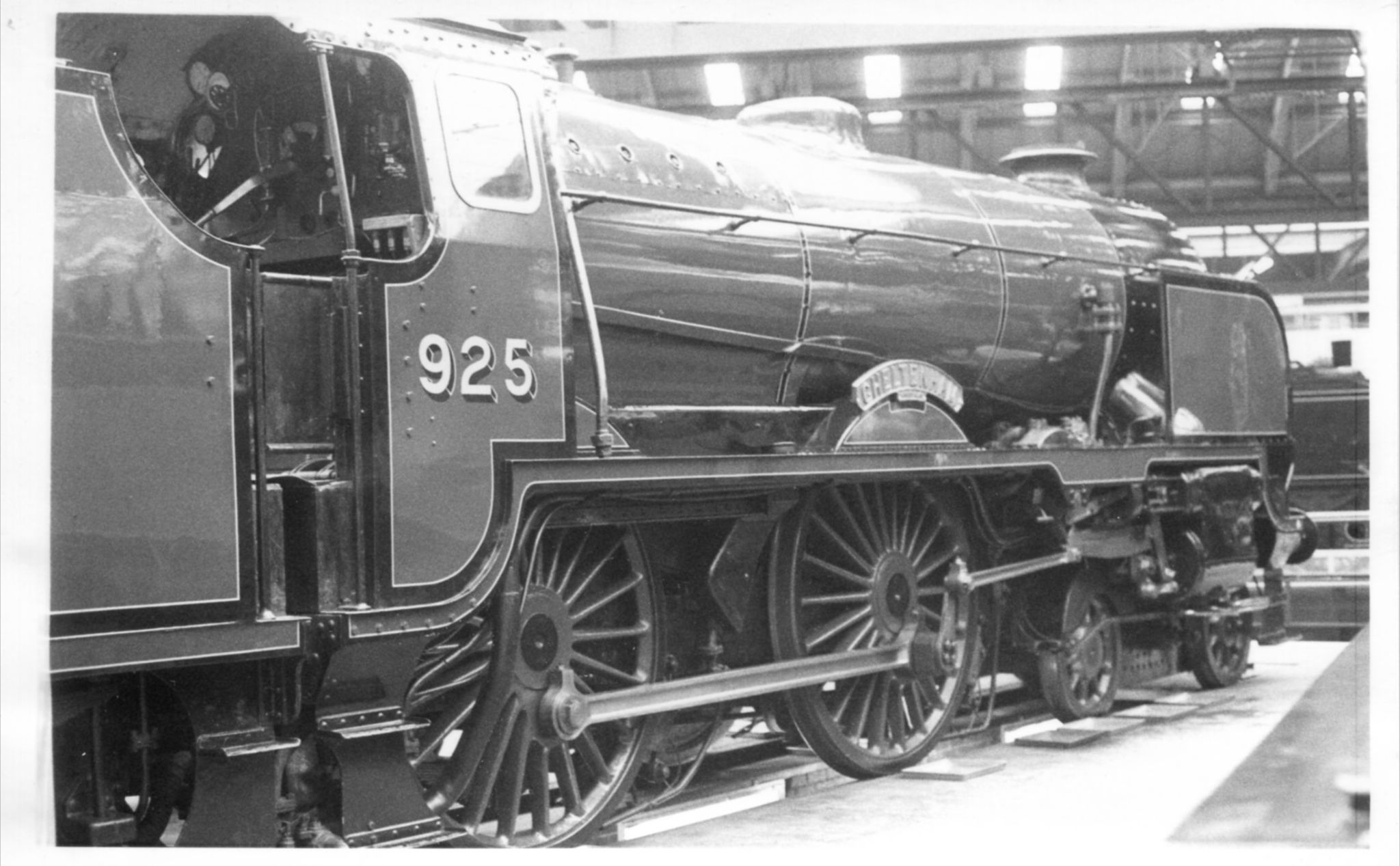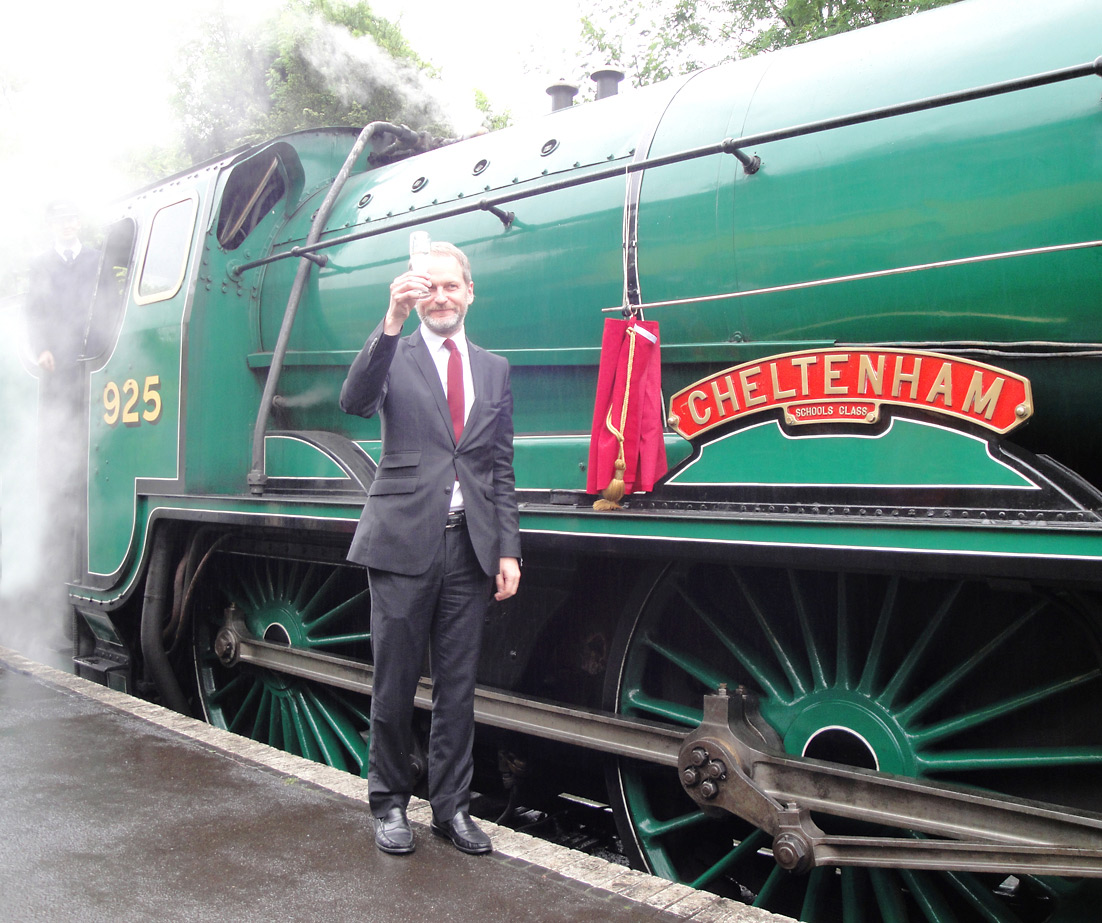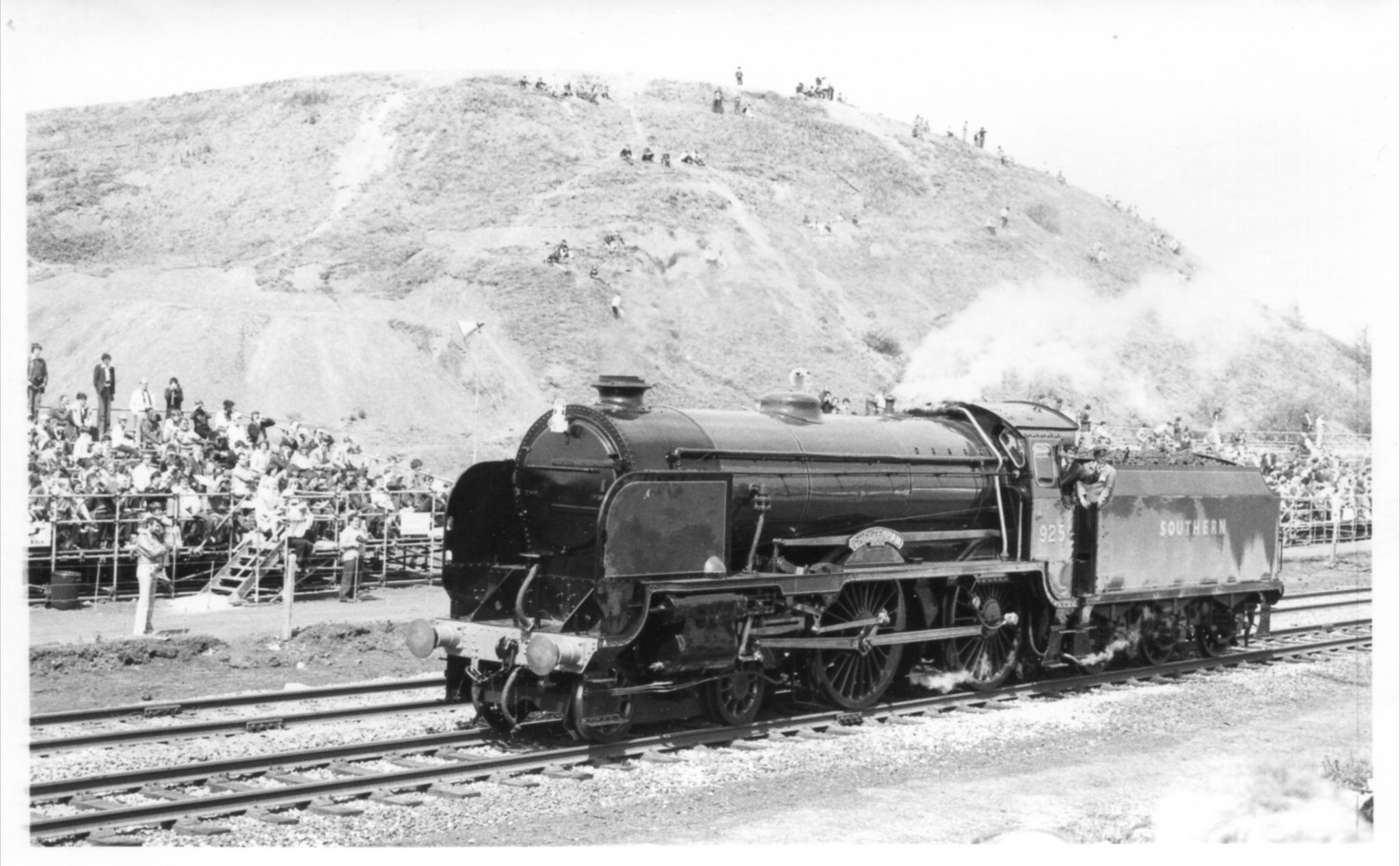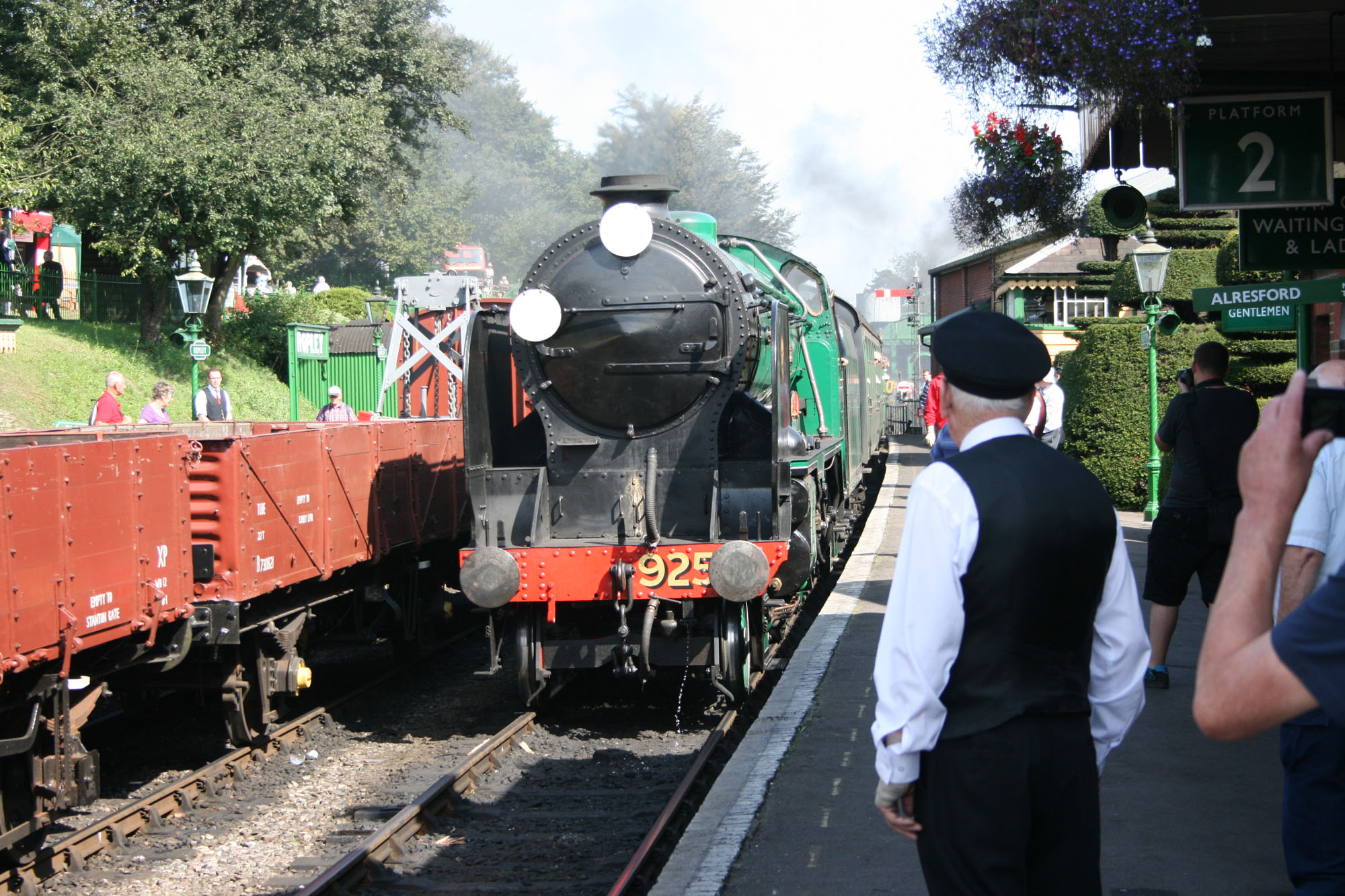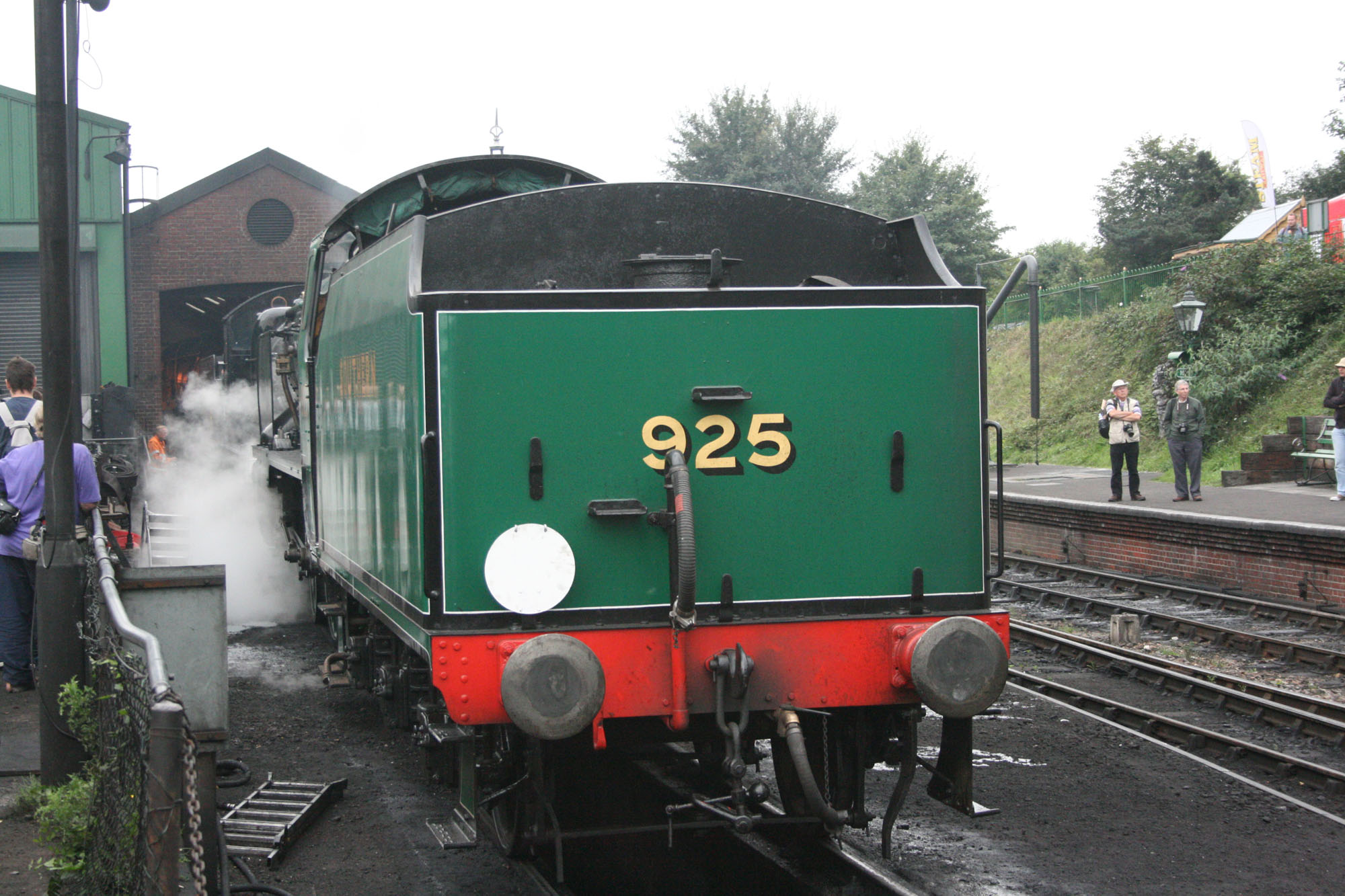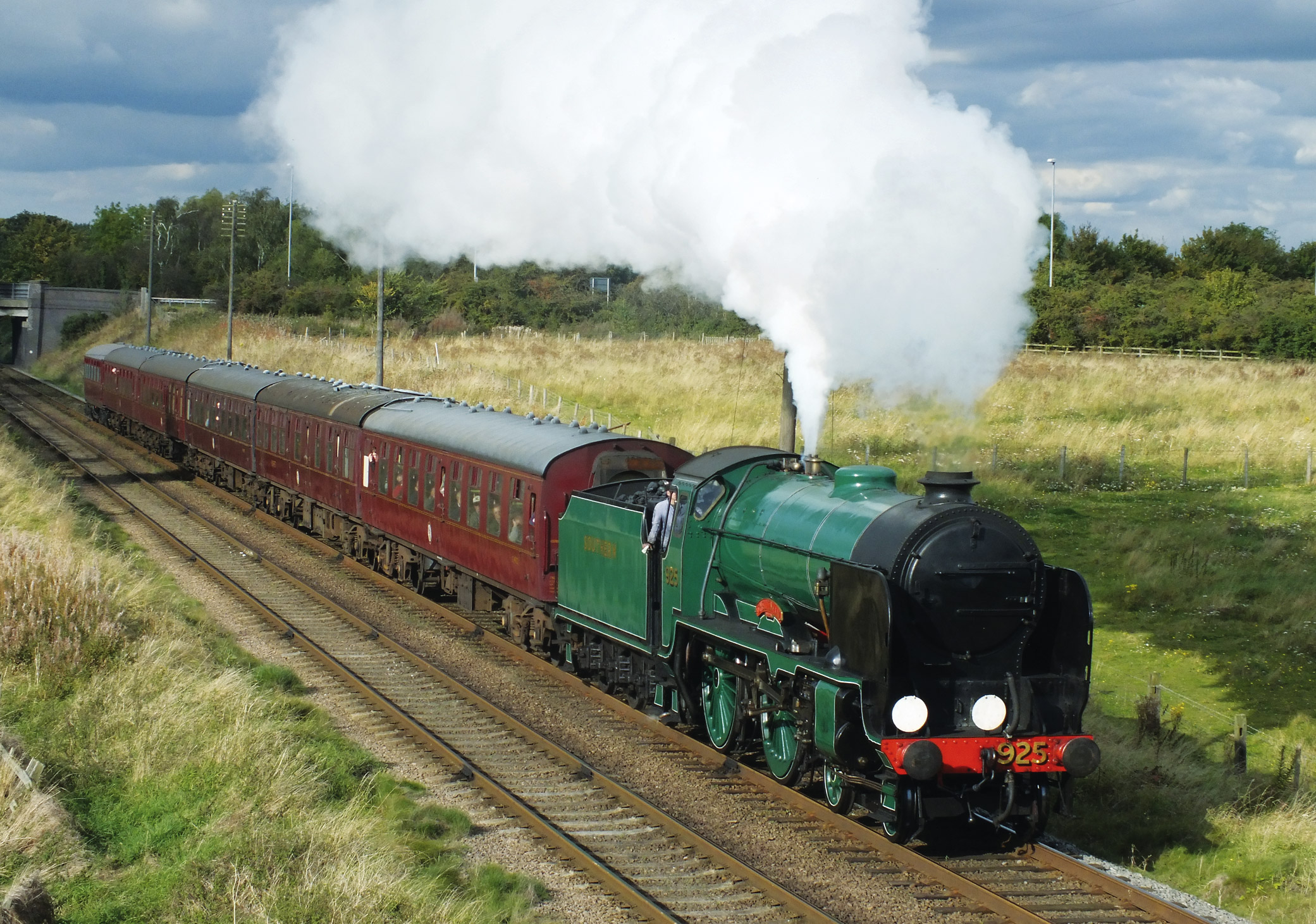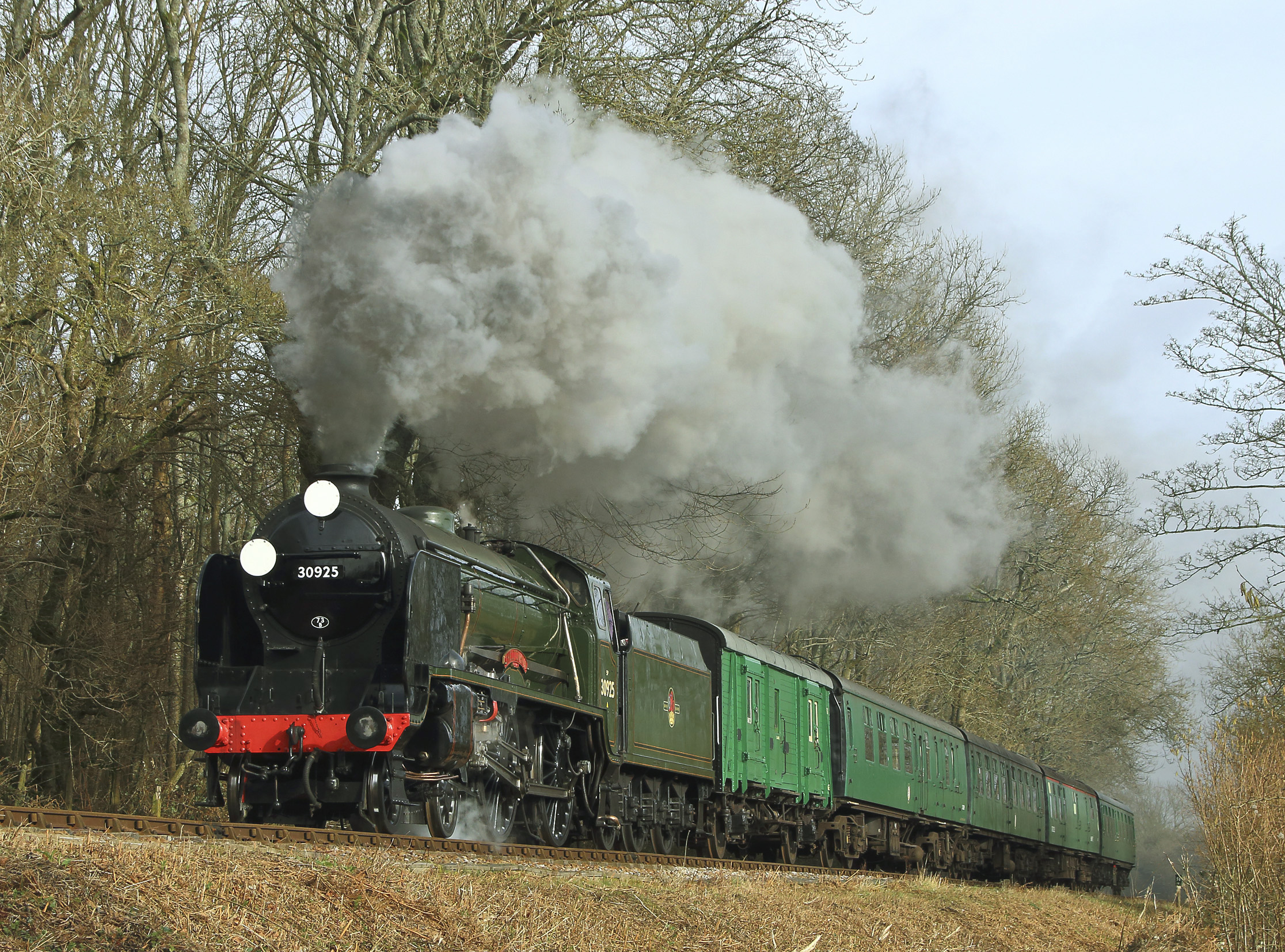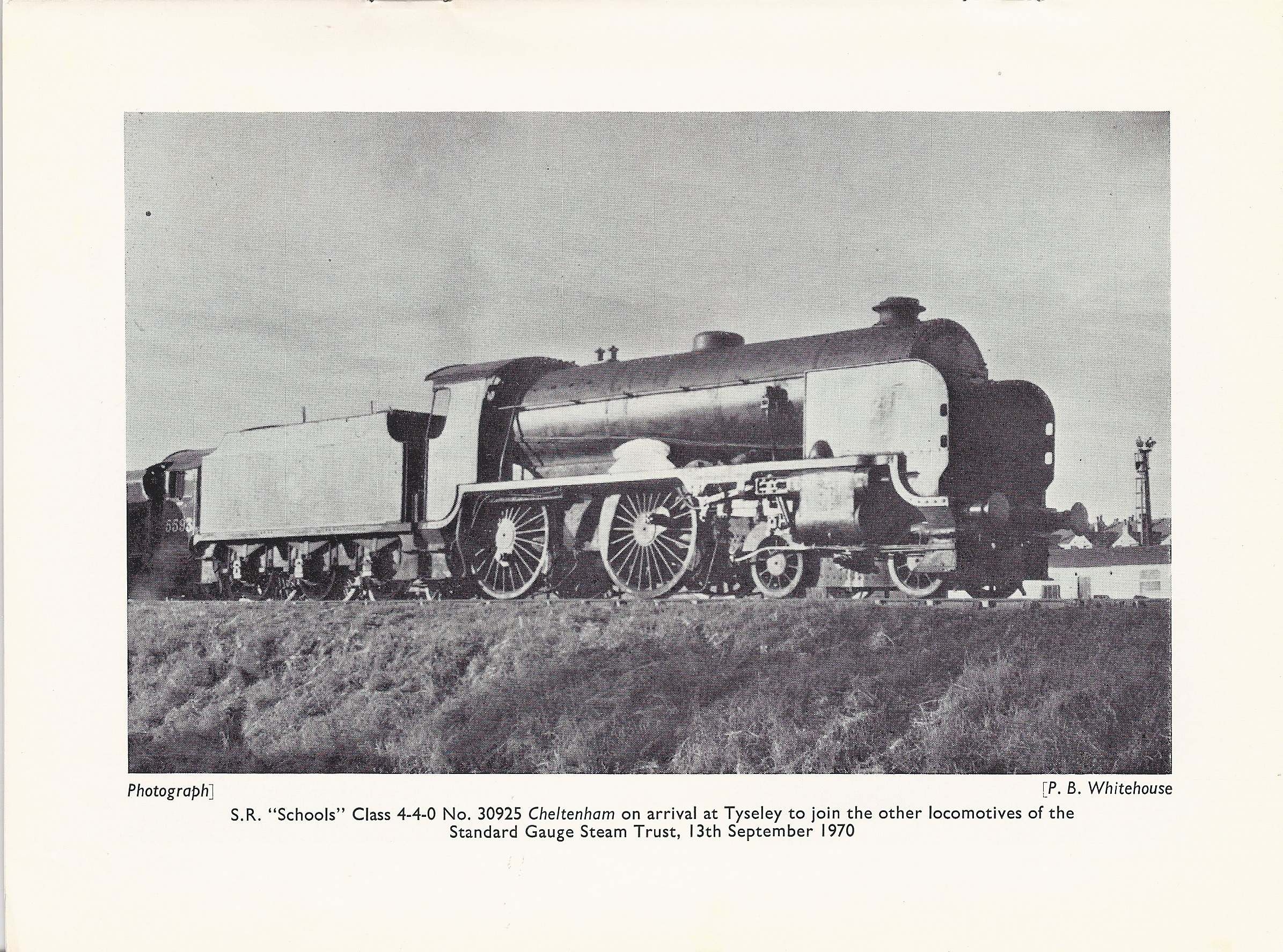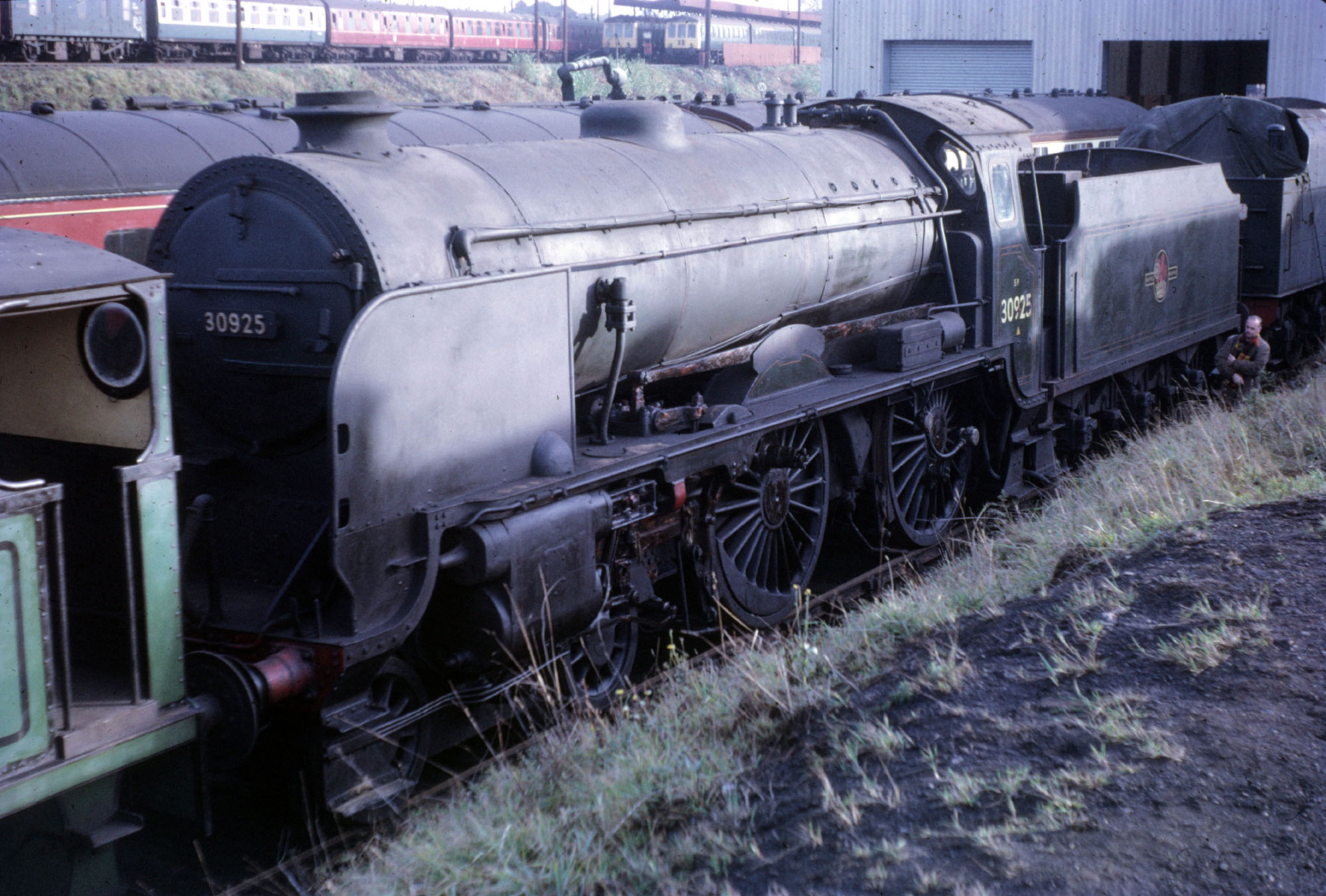925/30925 Cheltenham can be considered to be the first of ‘Our Locos’ since Cheltenham was the first branch of the society; for many years until December 1972 a line drawing of this locomotive appeared on the front cover of the society’s monthly magazine The Railway Observer (RO).
An excellent article in RO June 1950 gives detailed dimensions for "Schools" locomotives, together with information on Cheltenham’s livery, allocations and main workings.
The text for the Cheltenham pages has been compiled from RO starting with the 1934 issues and continuing until 1963 and from the RCTS book Locomotives of the Southern Railway, part 1. Some photographs and front cover images have been scanned from these issues and one photograph from the book. Railway Locomotives (RL), the monthly magazine of the former British Locomotive Society has also been used as a source for allocation information. Thanks to Jeremy Harrison for his assistance in providing material for the 925/30925 Cheltenham section.
By 1927 the heaviest expresses on the Southern Railway were well served by post-Grouping 4-6-0s, but no modern class existed to haul intermediate expresses. Maunsell’s “Schools” class was introduced in 1930, as a cut down version of the "Lord Nelson" class, which proved capable of hauling all except the heaviest expresses, although a six-wheeled tender of 4,000 gallon capacity was on the small side for the non-stop Waterloo to Bournemouth runs. An unexpected bonus was that the round-topped firebox allowed the cab profile to be adapted to suit the Hastings line loading gauge; the upper plates of the tender were also slanted in.
“Schools” were built at Eastleigh Works in three batches. The first batch was built in 1930 at the bargain price of £ 6,930 each. 925 Cheltenham, the sixteenth engine of the second batch, was delivered in April 1934. Immediately after delivery the first batch E900-E909 were displayed for a short time at stations close to the schools after which they were named; it is thought that this only applied to this first batch, there is no report in 1934 issues of RO of this happening in Cheltenham. It should be noted that 925 was named after the boys’ school Cheltenham College, not the possibly better known girls’ school Cheltenham Ladies College.
925 Cheltenham in SR service
925 Cheltenham was delivered from Eastleigh Works in April 1934 in sage green livery lined out with black and white, a small brass numberplate on the cab side with the larger, painted locomotive number 925 and the inscription SOUTHERN on the tender; the front buffer beam had No to the left of the coupling with 925 to the right. 925 was initially allocated to Fratton (Portsmouth) where, along with 924/6-9, it worked on the Waterloo and Portsmouth direct line; they were joined a few months later by 930-3 of the third batch. In July 1937, following electrification of the Portsmouth line, this batch of ten engines was transferred to Bournemouth where they worked heavy Waterloo trains including the 108 minute non-stop run of the pre-war "Bournemouth Limited".
In 1938 the new Southern Railway C.M.E. Bulleid experimented with various liveries. 925 was repainted in malachite green with the painted number moved to the cabside, a position which later became the Southern Railway standard. The number 925 remained on the buffer beam but No had been removed. New standard liveries were selected in 1939; the "Lord Nelson" and "Schools" classes were to be malachite green, as already carried by 925, lined out in yellow and dark green with green deflectors; other classes were to be in olive green.
[Note. An alternative report is that, as part of the experimental liveries, 925 was repainted olive green in May 1939; from July 1940 repaints were in malachite green and 925 received this livery at an unreported date between then and April 1942, when there was a shortage of this colour of paint.]
While in Eastleigh Works in May 1941, 925 was fitted with a Lemaitre multiple jet blastpipe but, as a hole hadn’t been cut in the smokebox for a larger diameter chimney, the new blastpipe was removed; this was because a decision had been made not to modify any more locomotives at that time. Twenty "Schools" had been modified between February 1939 and March 1941; the remaining twenty, including 925, remained unmodified for the rest of their working lives.
Transfer information was very limited during World War II and for some time after, with Southern Railway transfers less regularly reported than the other main companies; we hope that no transfers have been missed. Cheltenham was stored on several occasions at less busy times of the year; details were reported in various issues of RO.

In April 1945 925 was transferred to Dover (RL, normally an excellent source for locomotive stock alterations, incorrectly reported this transfer as being to Folkestone) when, with its fellow class members, it was displaced by "Merchant Navy" and "Lord Nelson" class engines, upon the delivery of the second "Merchant Navy" batch. Upon arrival, Dover set to work polishing 924-7 before sending them out; within 48 hours they were the cleanest engines on the Eastern Section since 1942. 925 lost its green livery in September 1945, receiving a coat of unlined black paint at Eastleigh Works. It was reported in 1947 that Dover shed kept 925 spotlessly clean with shining motion and polished cab window beading and other fittings. In December 1947 925 was repainted malachite green, becoming the last of twenty five class members to be repainted before nationalisation; it was fortunate to be repainted thus as, the following year, standard liveries were defined with only the most powerful passenger engines receiving green livery.
30925 Cheltenham in BR service
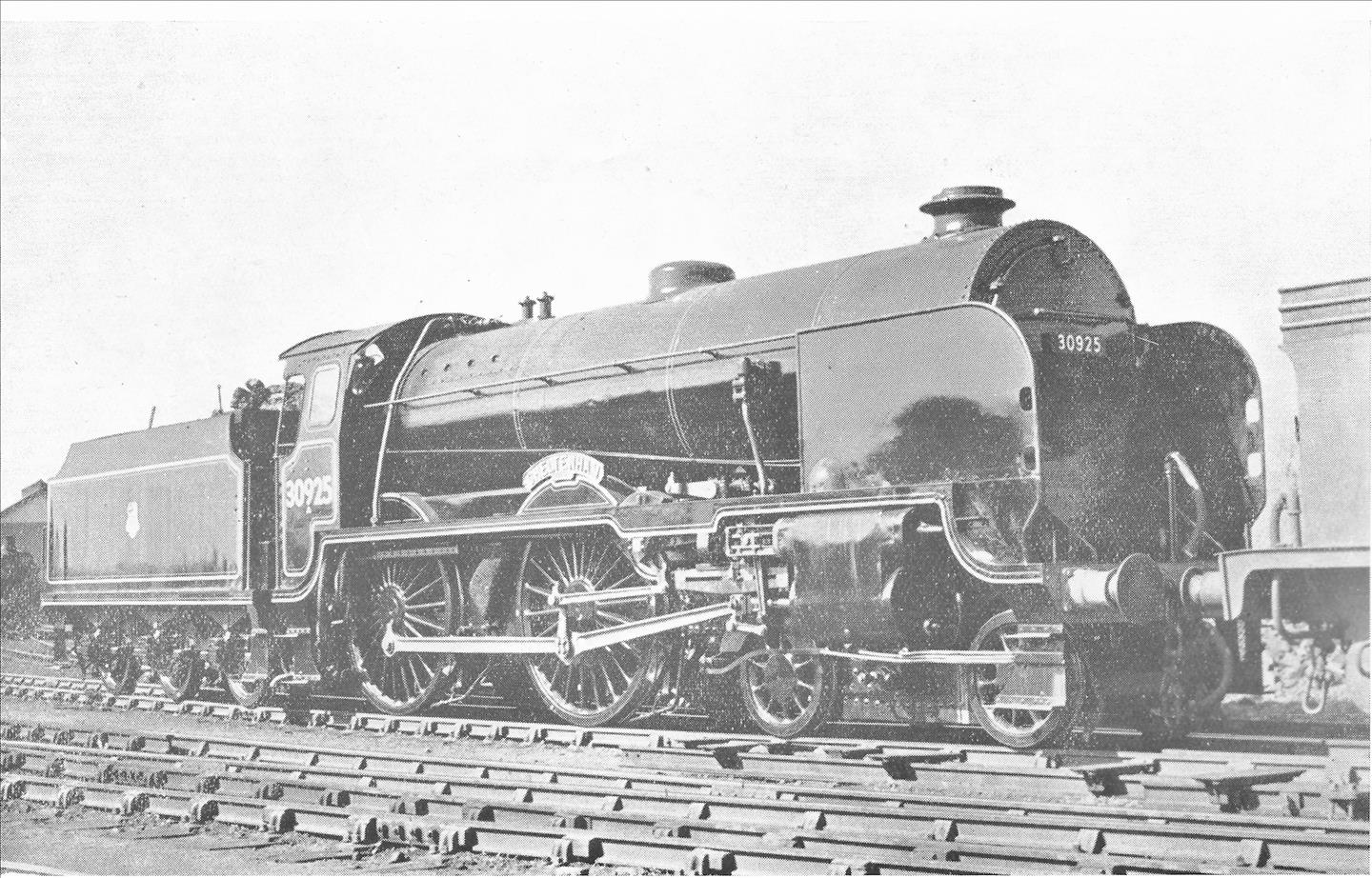
In May 1950 Cheltenham received the new British Railways’ fully lined black livery and was renumbered 30925. As can be seen from the photograph, it now carries a smokebox door number plate but doesn’t yet appear to have a shed plate. It was transferred to Bricklayers Arms in May 1951, when there were so many Southern Region transfers for the start of the summer timetable that RO issued a special allocation supplement for that region.
In February 1960 30925 was seen in the yard of Ashford Works painted dark green after general repairs; it is likely that this was a livery change as several class members remained black until withdrawal. It was transferred to Stewarts Lane in February 1961 and on to Basingstoke in August 1961 where it remained, apart from being loaned to Nottingham in May 1962 to work a rail tour, until it was withdrawn in December 1962, when seventeen class members were withdrawn making the "Schools" class extinct in normal service. 30925 had run 1,127,788 miles between April 1934 and December 1962, one of the highest mileages achieved for its class.
Cheltenham worked several special trains, see Rail Tours and Royal Train below. Other notable workings reported were:-
- A society fixture on 24th May 1936 visited the Isle of Wight; appropriately the return journey from Portsmouth Harbour to Waterloo was hauled by 925 Cheltenham.
- In August 1949 925 was an unusual visitor to Hastings, "still Southern and fairly clean green".
"Schools" continued to appear at Exeter Central up to the end of the summer service. On 1st September 1962 30925 arrived three minutes early with ten coaches on the 10-15am ex-Waterloo, returning next day with the 11-0am (Sundays) to Waterloo.
Further photos of 925/30925 are available on the RCTS Photo Archive.
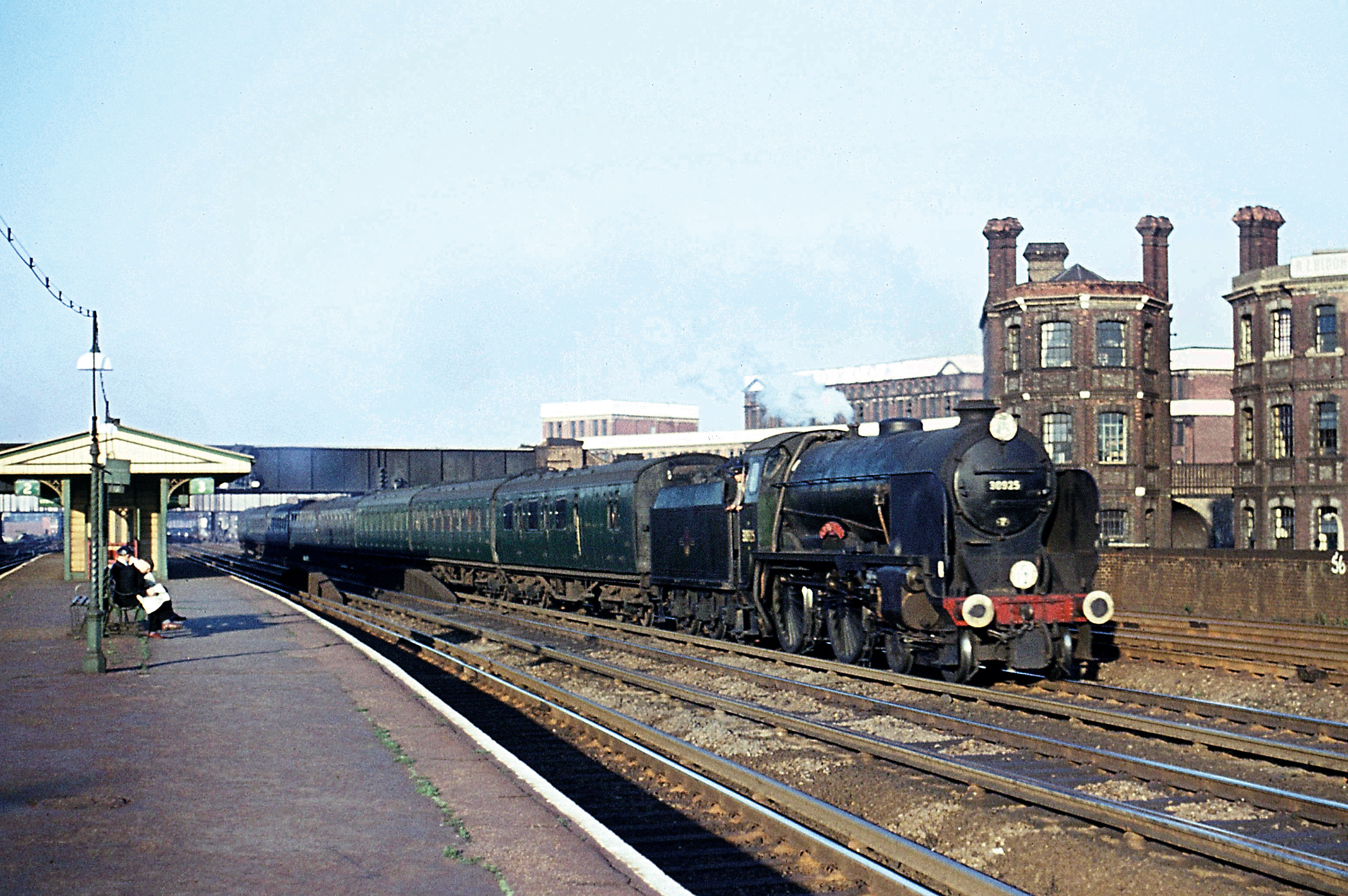
925/30925 in The Railway Observer
The Railway Observer for January, 1936, appeared with a new cover design by Mr. George Grigs which incorporated a fine drawing of the "Schools" class engine, S.R. 925 Cheltenham, by Mr. R.K. Richardson. As is well known, this engine was chosen because Cheltenham was the town where the Society was founded in 1928 by Messrs. Broad and Lapper.
January, 1950’s Railway Observer showed 30925 in British Railways’ livery – a revised drawing and new block having been used for the first time. Revisions were based on official information which was, as regards the livery premature, as regards the snifting valves out-of-date, and as regards the multiple jet large diameter chimney futuristic !* In the circumstances a brief illustrated history of the Society’s adopted engine is very appropriate.
* As recorded on page 136, June 1941 R.O., No 925 was in fact fitted with a multiple jet blast pipe in 1941, but was reconverted before leaving Eastleigh Works.
925 was the sixteenth engine built to Order E361 at Eastleigh Works and entered traffic in April, 1934. As a member of the most powerful class of 4-4-0’s in Europe, 925 is one of Mr. R. E. L. Maunsell’s design of Class V engines. Three 16 1/2in.x26in. cylinders are supplied by steam from the boiler which has a round-topped firebox and is pressed to 220 lbs./sq. in. The water heating surface totals 1,766 sq. ft. made up of 1,604 sq. ft. of tube surface and 162 sq. ft. of firebox surface. A moderate superheating surface of 283 sq. ft. is provided and the driving wheel diameter is 6 ft. 7 in. The tractive effort at 85 per cent of the boiler pressure in 25,130 lbs., which gives a high power/adhesion ratio in view of the low adhesive weight of 42 tons. A six-wheeled tender is provided of 4,000 gallon capacity which was on the small side for the non-stop Waterloo to Bournemouth runs.
When new 925 was allocated to Fratton (Portsmouth) shed where, with 924/6-33 it worked on the Waterloo and Portsmouth direct line. For four years these ten engines did good work of the tight 90 minute schedule over the undulating 74-mile route, with heavy banks up to Haslemere and Buriton and its slacks for Havant, Guildford and Woking junctions. In July, 1937, following electrification of the Portsmouth route, 925 went, with its nine fellows, to Bournemouth shed, there to achieve fame and success on the heavy Waterloo trains, including the 108-minute non-stop run of the pre-war "Bournemouth Limited".
In July, 1938, 925 was one of seven engines which appeared in the new malachite green livery with the engine number transferred to the cab side from the tender, the arrangement which later became S.R. standard. The bright green engines and carriages were a pleasing feature of the August, 1938 holiday traffic to Bournemouth.
925 Cheltenham remained at Bournemouth until April, 1945 when, with its fellows, it was transferred from the Western Section, having been displaced by "Merchant Navy" and "Lord Nelson" class engines.
925 went to Dover shed, but soon lost its malachite green livery for in September, 1945, a coat of black paint, unlined, was applied at Eastleigh.
However, in January, 1948, Cheltenham again appeared resplendent ex-works in malachite green livery, with snifting valves removed. On 13th May, 1950, Cheltenham, now renumbered 30925, emerged from the works in the new British Railways’ black livery with full lining, but unfortunately, for our cover drawing, with an original chimney ! The frontispiece to this issue shows the Society’s engine in its present condition – a beautifully finished product of the painters and in such superlative condition that the Society could but feel proud of its adopted engine.
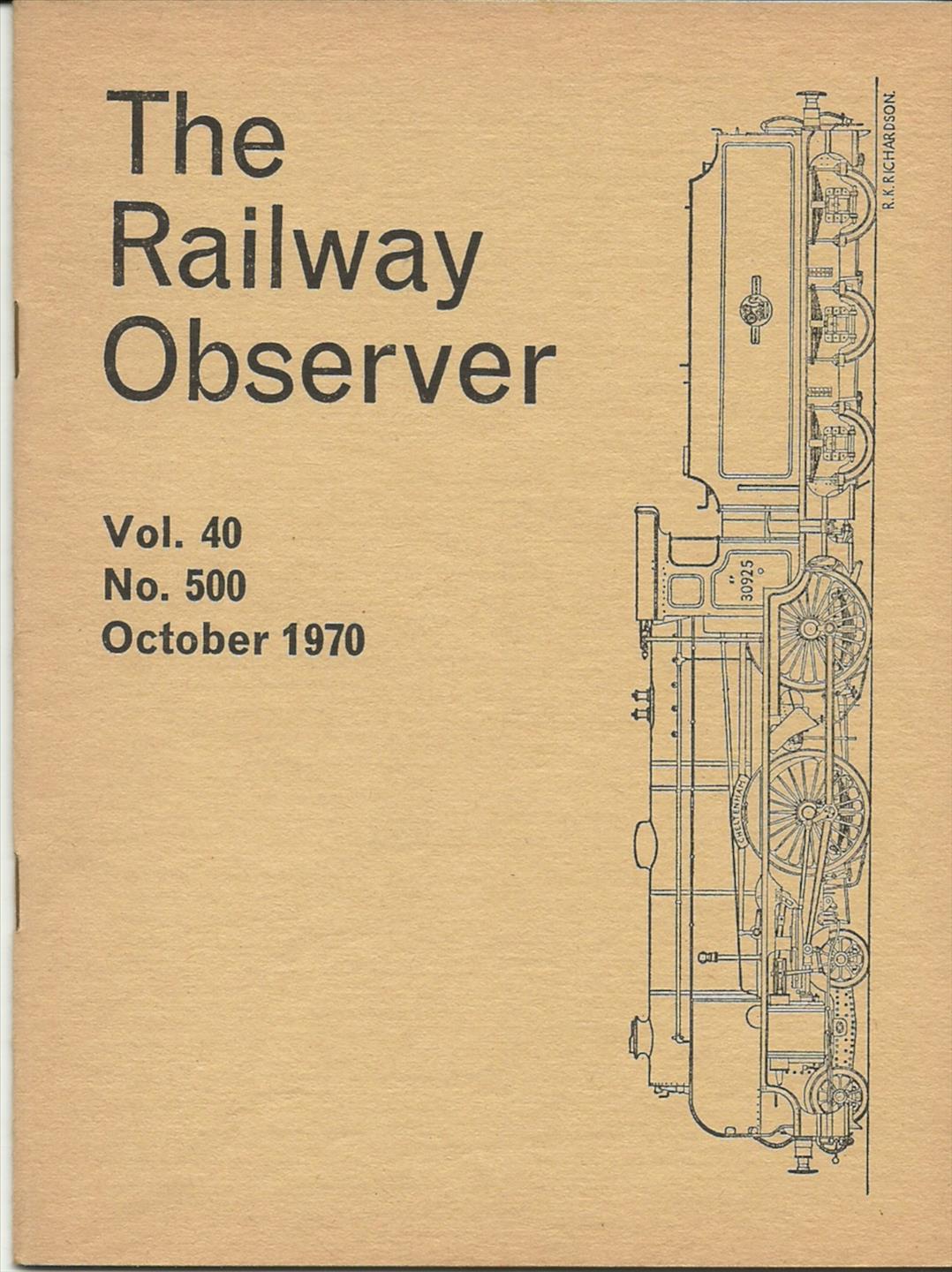




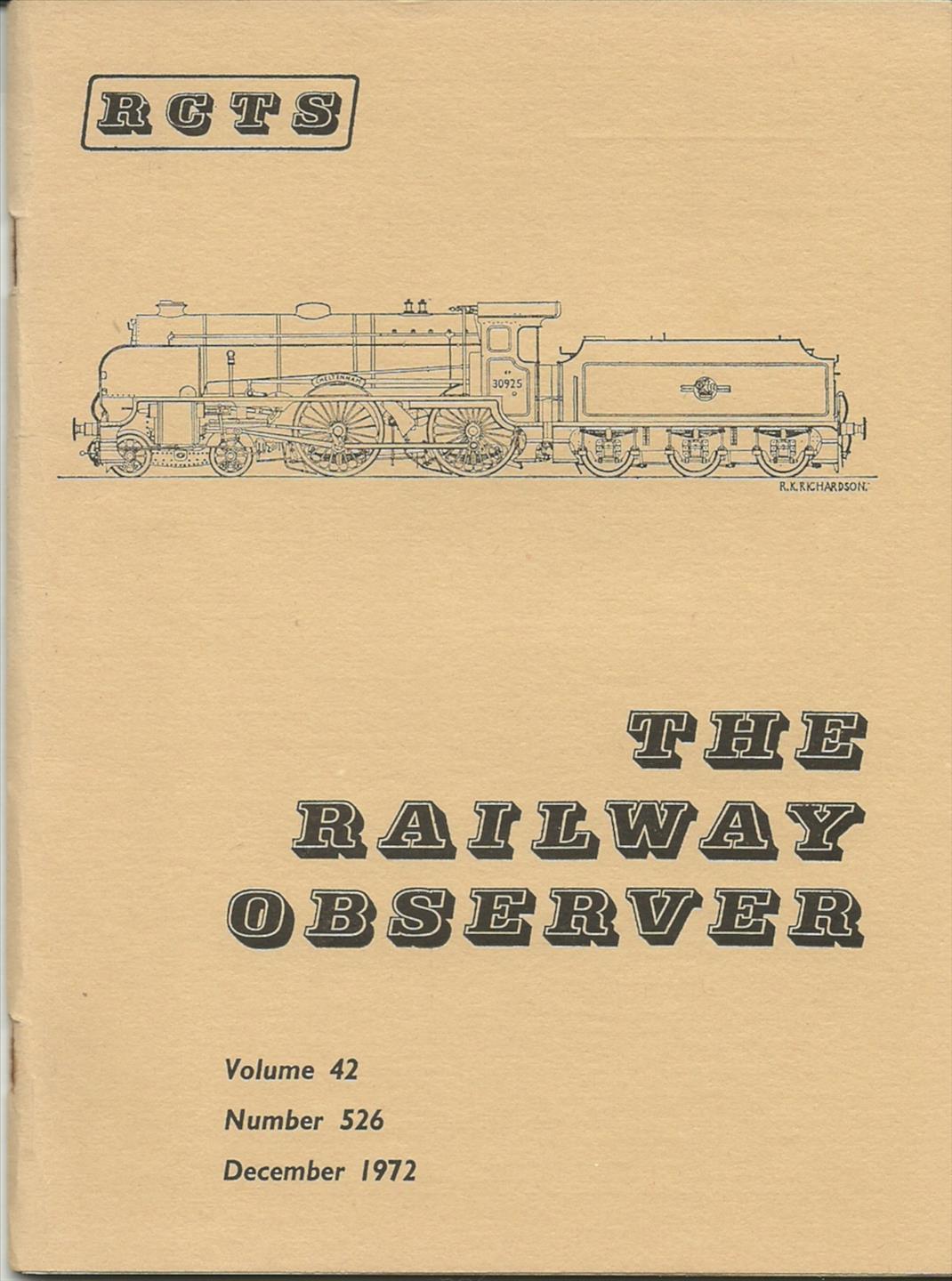
Rail Tours and Royal Train
30925 Cheltenham worked a rail tour and the Royal Train in 1956 and two further rail tours in 1962. The most ambitious of these was in May 1962 when it was temporarily transferred to Nottingham, from where it double-headed the local branch’s East Midlander no.5 to Darlington.
Each of the rail tours was reported in detail in the issues of RO from which the scans were made. These rail tours are also reported on the website www.sixbellsjunction.co.uk which contains itineraries, timings (in some cases actual as well as booked) and some photographs including two additional ones of 30925.
Click an image to start a slideshow. Escape to exit
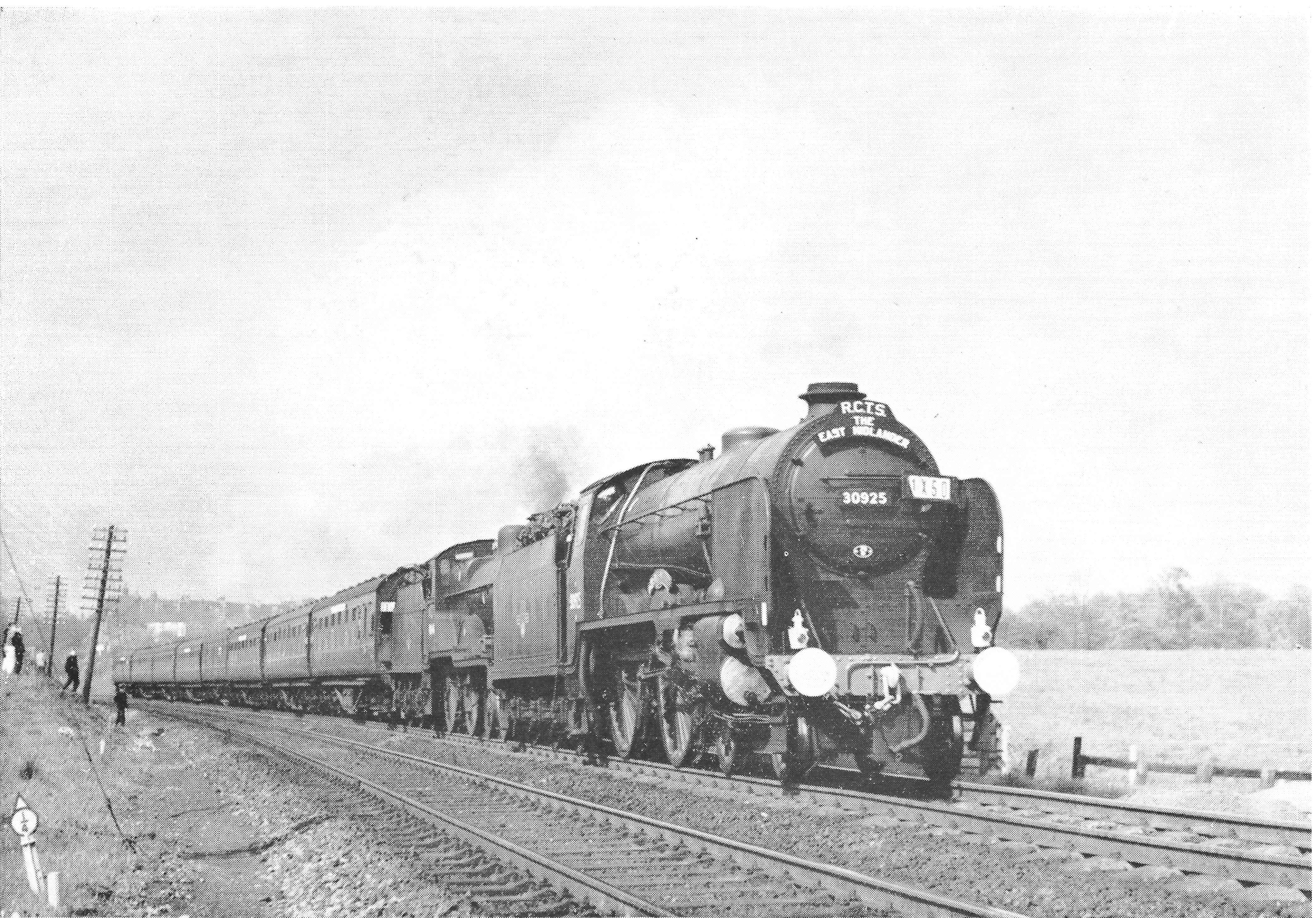
Preservation
After withdrawal from BR service, 30925 was stored at various locations, initially at Fratton shed. In July 1963 there were eight withdrawn Southern Region engines, including 30925, stored there; most of these have since been preserved. 30925 was still at Fratton in August 1964.
Locomotives of the Southern Railway reports that 30925 was stored at Stratford and Preston Park; the former is possibly an error for Fratton, unless members can advise otherwise. When it appeared unlikely that restoration would be achieved by British Rail it was transferred on loan to the Standard Gauge Steam Trust, Tyseley in September 1970, followed by a further move in January 1973 to the Dinting Railway Centre.
It was overhauled at Eastleigh Works in 2012 and repainted as 925 in Southern Railway malachite green livery; this was completed in May, in time for it to attend Railfest 2012 at NRM, York in June. It was then returned to service on the Mid Hants Railway and hauled Santa specials in December 2012.
In June 2019 the National Railway Museum authorised repainting to BR lined green livery, as had been carried when withdrawn from BR service, with renumbering back to 30925. The work was carried out at the Mid Hants Railway by Heritage Painting, assisted by MHR volunteers, completed in August 2019. 30925 resumed passenger service on the MHR the following month.
Click an image to start a slideshow. Escape to exit
